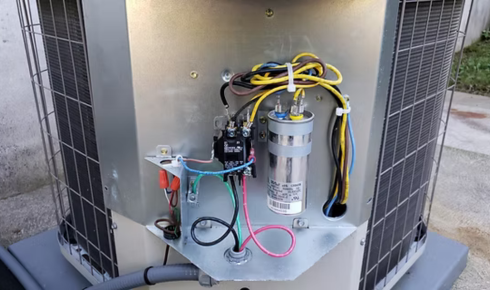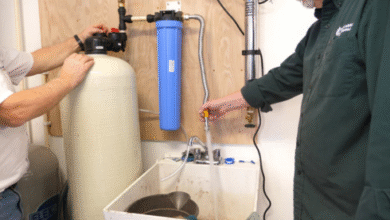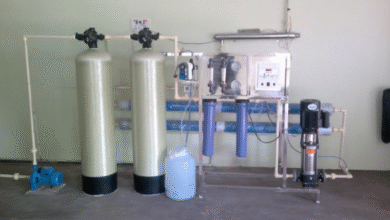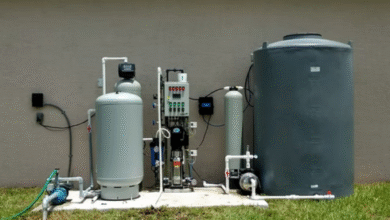The Little Part That Makes a Big Difference: Understanding Your AC’s Contactor

There’s something oddly comforting about the soft hum of an air conditioner on a hot afternoon — that background sound that says, everything’s working just fine. Until one day, it’s not. The fan outside goes quiet, the air inside starts feeling heavy, and you’re left wondering why your trusty system suddenly decided to take a day off.
When that happens, most people jump straight to blaming the compressor or thermostat. But often, the real troublemaker is much smaller, much cheaper, and sitting quietly inside your outdoor unit — the contactor.
Now, if you’re scratching your head thinking “contactor?” — don’t worry. You’re not alone. It’s one of those parts that rarely gets mentioned unless it fails. But understanding what it does can save you time, stress, and maybe even a repair bill.
The Unsung Hero of Every Cooling System
Every time you lower the thermostat and hear your AC click on, there’s a split-second electrical dance happening behind the scenes. That click is your contactor coming to life.
So what exactly is a contactor hvac definition in simple terms? It’s an electrical switch that controls the flow of power to major components in your system — like the compressor and condenser fan motor. When your thermostat signals the need for cooling, the contactor “closes,” allowing high-voltage electricity to pass through and bring your AC to life.
When cooling isn’t needed, the contactor “opens,” cutting off the current. It’s a simple mechanism, but it’s crucial. Without it, your air conditioner wouldn’t know when to start or stop.
Think of it like a traffic light for your system’s electricity — managing when energy should move and when it shouldn’t. When it’s working right, you’ll never notice it. When it’s not… well, you’ll definitely feel it.
When the Contactor Starts Failing
Over time, even the toughest little switches wear out. Contactors deal with high voltage and repetitive electrical arcing every time your AC cycles on. That constant strain gradually burns or pits the metal contacts, making it harder for them to complete the circuit cleanly.
The first signs of trouble are subtle: the outdoor unit might hesitate before starting, or it might run inconsistently. You could hear a buzzing sound coming from the condenser — that’s often the contactor struggling to engage.
If you notice your system clicking on and off rapidly or refusing to start at all, it’s time to look closer. Many homeowners assume this kind of problem points to a bad capacitor or compressor, but the humble contactor is often the hidden culprit.
The Anatomy of a Contactor
It’s actually a fascinating little device once you see it up close — about the size of a small matchbox, with copper coils, spring-loaded contacts, and metal terminals on each side. When voltage is applied from the thermostat, the magnetic coil inside pulls the contacts together, completing the high-voltage circuit that powers your system.
It’s part mechanical, part electrical — simple enough to understand, but absolutely vital for performance.
And while it’s built to last for years, dust, heat, moisture, and corrosion can shorten its lifespan. If your outdoor unit sits exposed to the elements or in an area prone to pests or humidity, your contactor’s life might be cut short without proper maintenance.
DIY Curiosity: How to Check AC Contactor Safely
If you’re the kind of person who likes understanding what’s under the hood, checking your contactor can be a satisfying bit of detective work. But let’s be clear — we’re talking about high-voltage electricity here. how to check ac contactor So if you’re not comfortable around electrical components, it’s perfectly okay (and smart) to call a pro.
Still, if you’re careful and curious, here’s how the process works.
- Power Down First. Always switch off power at the breaker box and the outdoor disconnect. Double-check with a non-contact voltage tester to make sure no current is flowing.
- Remove the Access Panel. You’ll find the contactor inside the control panel of your outdoor unit — usually near the capacitor and wiring terminals.
- Visual Inspection. Look for signs of wear — burnt marks, pitting, melted plastic, or insects (yes, ants love crawling into these things).
- Manual Test. Most contactors can be gently pressed down with a screwdriver (while power is off). If it moves freely and springs back smoothly, that’s a good sign. If it’s stuck or stiff, it may be failing mechanically.
- Electrical Test (Advanced). With a multimeter and the power back on, you can check voltage across the contactor terminals. A reading of zero volts when it should be energized often means the coil is shot.
A bad contactor won’t always look destroyed — sometimes it’s just electrically dead inside. That’s why technicians rely on both visual and voltage checks before deciding to replace it.
The Real Cost of a Small Problem
The good news? Contactors are one of the least expensive parts to replace in your system. Most cost under $50 for the part itself, and even with labor, it’s far cheaper than replacing a compressor or fan motor.
But ignoring the issue can quickly make things worse. When a contactor fails, it can stick in the “on” position — meaning your outdoor unit keeps running nonstop, even when the thermostat says stop. That not only drives your power bill up, but it also puts stress on every other component in your system.
On the flip side, a contactor stuck in the “off” position means your compressor won’t start at all. Either way, your comfort takes a hit.
This is why many HVAC technicians check the contactor during every routine maintenance visit. It’s a quick test that can prevent a breakdown before it happens.
Maintenance Makes the Difference
Like most things in your HVAC system, prevention is easier (and cheaper) than repair. Keeping the area around your outdoor unit clear of debris, trimming plants, and scheduling yearly tune-ups all go a long way in keeping parts like the contactor healthy.
Regular inspections catch issues like worn contacts, corrosion, or bugs before they turn into system failures. And while it’s tempting to only call for service when something breaks, a little attention once a year can keep your system running smoothly for much longer.
A Small Part, a Big Impact
It’s kind of poetic, really — a single switch quietly managing the heartbeat of your entire cooling system. The contactor doesn’t get credit when everything works perfectly, but it takes the blame when things stop.
Understanding the contactor hvac definition and what it does gives you an edge as a homeowner. You’ll recognize early symptoms, make smarter maintenance choices, and have more meaningful conversations with your technician when something feels off.
Wrapping It Up
The contactor may not be glamorous, but it’s proof that sometimes the smallest parts make the biggest difference.
So the next time your AC refuses to start or sounds a little off, don’t panic. It might not be the compressor, or a major electrical failure — it might just be that little switch asking for attention after years of hard work.
A simple replacement, a quick inspection, and you’re back to that sweet, familiar hum of comfort again — proof that, like most things in life, it’s the small details that keep everything running right.



